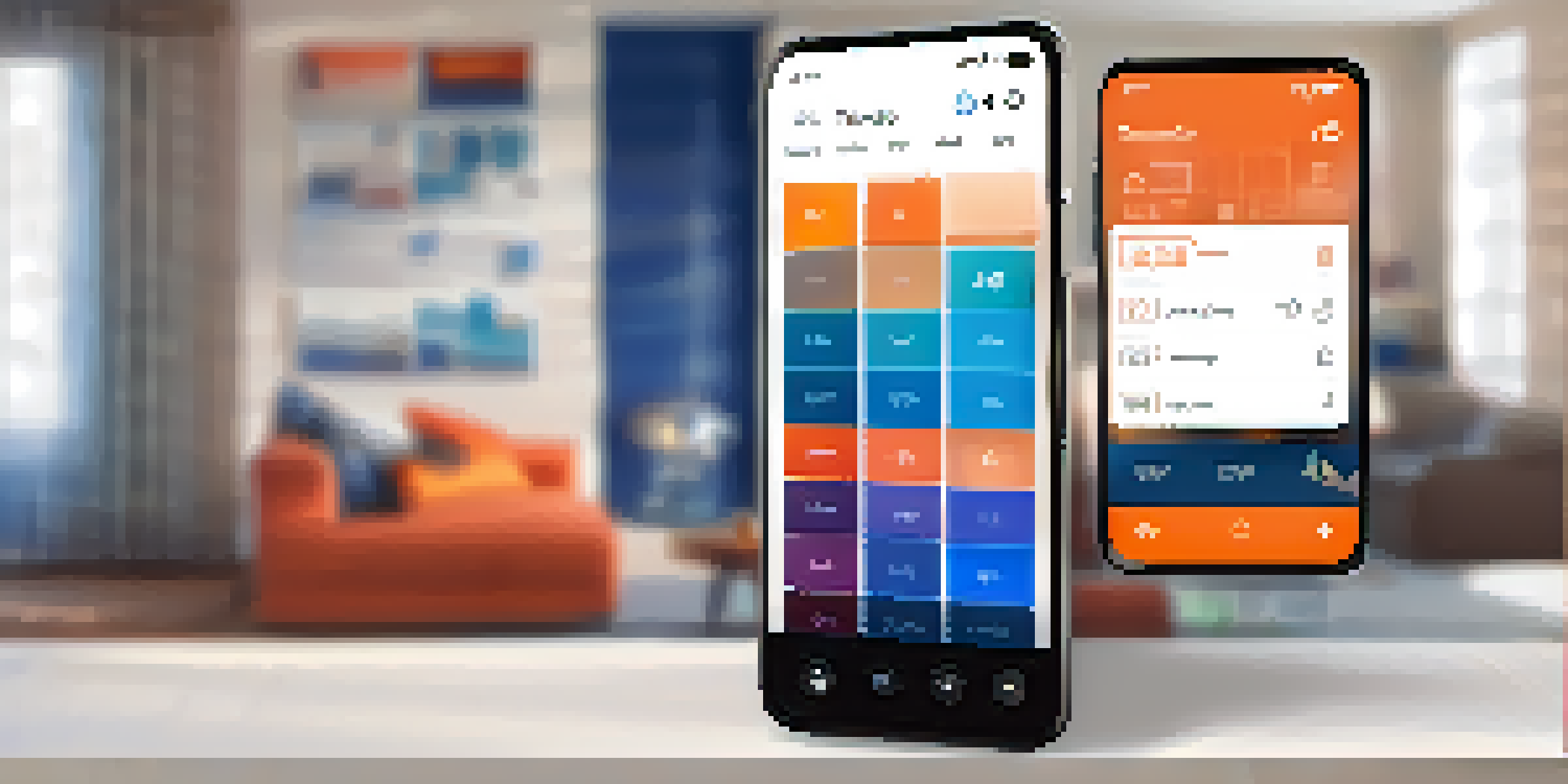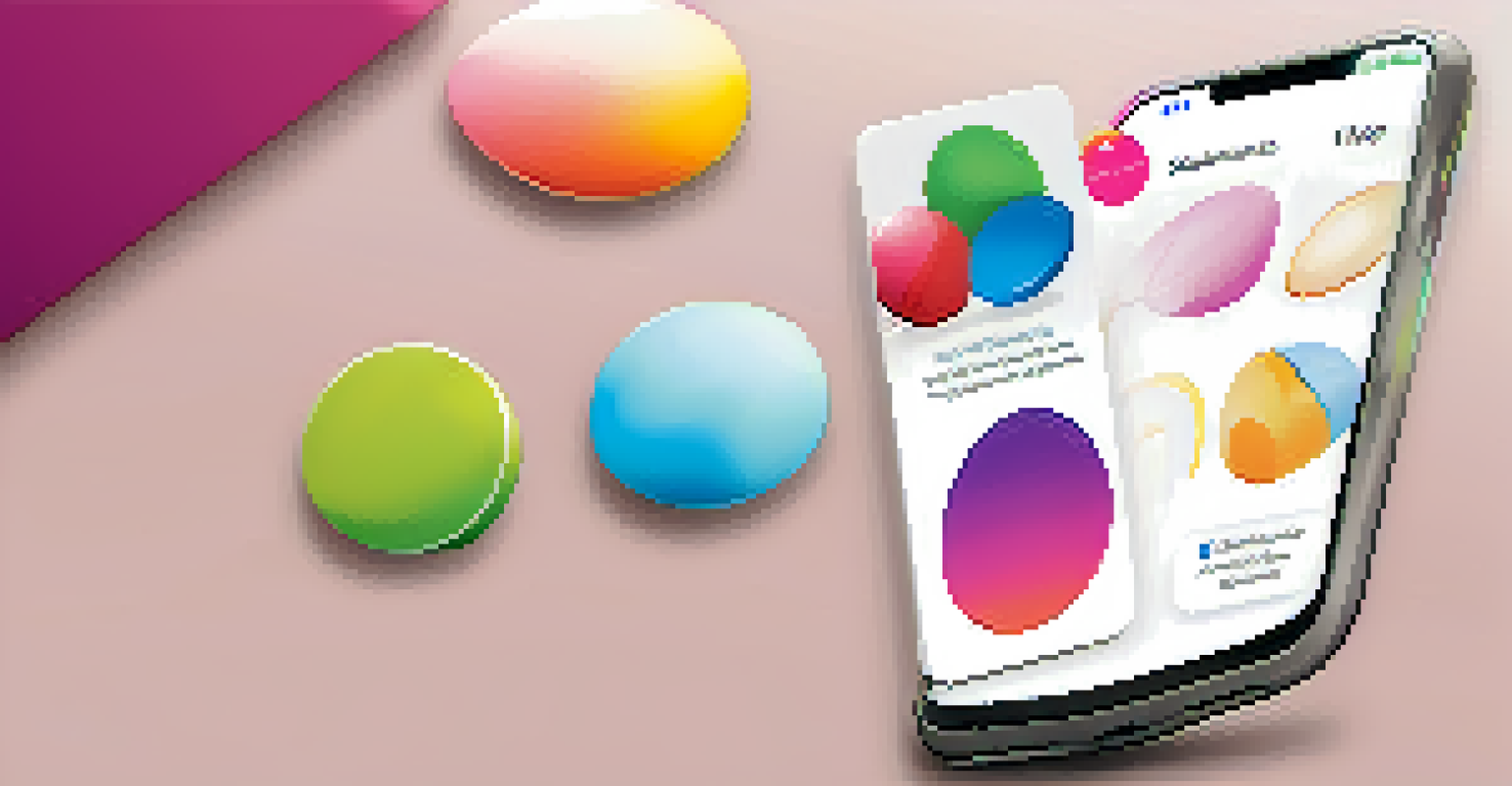The Role of UI Design in Mobile Application Development

What is UI Design in Mobile Applications?
UI design, or User Interface design, focuses on the look and feel of a mobile application. It encompasses everything from button placements to color schemes, ensuring that users can navigate the app effortlessly. Think of UI design as the storefront of a shop; it needs to attract customers while being easy to navigate.
Good design is obvious. Great design is transparent.
At its core, UI design is about creating an intuitive experience that feels natural to users. This means understanding user behavior and preferences to anticipate their needs. A well-designed interface can make a significant difference in how users interact with an app, often determining whether they stay or leave.
Related Resource
In the context of mobile applications, effective UI design can lead to higher user retention rates. If users find the interface appealing and easy to use, they are more likely to return to the app. In contrast, a cluttered or confusing interface can drive users away, emphasizing the importance of thoughtful UI design.
The Importance of First Impressions in UI Design
First impressions matter, especially in the digital world. When users download an app, they often judge it based on its UI design within seconds. A clean and attractive interface can make users feel confident about their choice to download the app, while a poorly designed one can lead to immediate uninstallations.

Consider the initial screen a user encounters upon opening an app. If it's visually appealing and easy to navigate, it sets a positive tone for the user's experience. On the other hand, if they are met with a cluttered screen filled with confusing icons, they may quickly lose interest.
UI Design Shapes User Experience
Effective UI design enhances user engagement by creating a visually appealing and intuitive interface.
Ultimately, the first impression can influence a user's perception of the entire app. A well-crafted UI not only attracts users but also builds trust, leading to a more engaged audience. This is why investing in UI design is crucial for mobile app developers aiming for long-term success.
Enhancing User Experience through Effective UI Design
User experience (UX) and UI design go hand in hand, but they are not the same. While UI focuses on aesthetics, UX encompasses the overall experience a user has with an app. Good UI design enhances UX by making interactions smooth and enjoyable.
Design is not just what it looks like and feels like. Design is how it works.
For instance, think about a music streaming app. If the UI is designed with clear icons, easy navigation, and a visually appealing layout, users can quickly find their favorite songs and playlists. This seamless interaction keeps users engaged and satisfied.
Related Resource
In contrast, a poorly designed UI may frustrate users, leading them to abandon the app altogether. Therefore, effective UI design is essential for creating a positive user experience that encourages users to explore and utilize all the app's features.
Consistency: A Key Principle in UI Design
Consistency in UI design is crucial for creating a cohesive experience across an app. This means using the same colors, fonts, and button styles throughout the application. When users encounter familiar elements, they feel more comfortable navigating the app.
For example, if a button to access settings is always located in the same place and has the same appearance, users will quickly learn where to find it. This reduces confusion and enhances usability, making the app feel more intuitive.
Consistency Builds Trust
Maintaining consistent design elements across an app fosters familiarity and comfort for users.
Moreover, consistency helps reinforce the app's brand identity. A uniform design can make the app more recognizable and memorable, leading to stronger brand loyalty among users. This highlights how important it is to prioritize consistency in UI design.
The Role of Color in UI Design
Color plays a significant role in UI design, influencing user emotions and perceptions. Different colors can evoke different feelings; for instance, blue often conveys trust and security, while red can create a sense of urgency. Choosing the right color palette is essential for setting the right tone for an app.
Moreover, color can be used to guide users' actions. By strategically placing contrasting colors on buttons or call-to-action elements, designers can draw attention to important features. This not only enhances usability but also leads to higher conversion rates.
Related Resource
However, it's important to strike a balance. Overuse of bright colors can overwhelm users, while too many muted tones can make an app look dull. Thoughtful color choices can significantly enhance the overall UI design and user experience.
Mobile Responsiveness: Adapting UI Design to Different Devices
In today's world, users access mobile applications on a variety of devices, from smartphones to tablets. This makes mobile responsiveness a vital aspect of UI design. A responsive design ensures that the app looks and functions well on screens of all sizes, providing a seamless experience.
Imagine trying to use a mobile app that looks great on a phone but is difficult to navigate on a tablet. Users will quickly become frustrated and may choose to use a competitor's app instead. Responsive UI design eliminates these issues, allowing users to switch devices without compromising their experience.
Color Influences User Behavior
Strategic use of color in UI design can evoke emotions and guide user actions for better interaction.
Responsive design also involves adapting elements like text size and button placement to ensure usability. By prioritizing mobile responsiveness, app developers can reach a broader audience and enhance overall user satisfaction.
User Testing: The Importance of Feedback in UI Design
User testing is a critical step in the UI design process. By gathering feedback from real users, designers can identify pain points and areas for improvement. This iterative process helps create an interface that truly meets users' needs and preferences.
For example, conducting usability tests can reveal whether users struggle with certain features or if they find the navigation confusing. This feedback is invaluable for making informed design decisions that enhance the overall user experience.

Moreover, involving users in the design process fosters a sense of ownership and connection to the app. When users feel that their opinions are valued, they are more likely to become loyal advocates for the product. Thus, user testing is essential for refining UI design and ensuring its success.